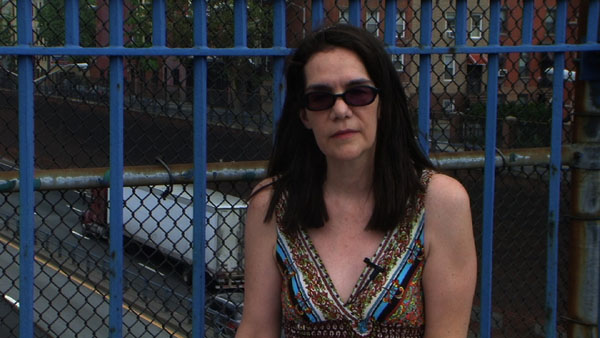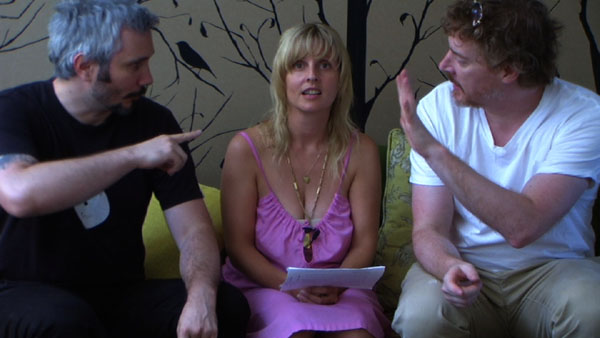Damn, yeah!

Joseph Young’s Easter Rabbit is re-released with a beautiful new cover. (Just a bit of it above. Link on through for the whole pretty thing.)
Higgs reviewed it here. If you missed it on the first go round, hop on for the new one, you. There’s some new goodness.
Joseph Young’s NAME
I posted this video for the line, “You gotta pay your dues before you pay the rent,” but watching it now and digging it, I’m struck by how the whole thing applies to Joseph Young’s new novel, NAME. Not the tone or the shots from Lollapalooza, but all those crowd scenes juxtaposed with Mark Ibold looking all lonely has its parallels. So just watch that video but listen to Bauhaus and right there you’ve made the movie adaptation of Joe’s book.
Dues paid, Joe wrote NAME last month to pay next month’s rent. You can buy the book for a donation of at least $10 to this cause. Well, hell, that’s cool, and pretty cheap for a 25,000 word novel. That it was written in a matter of weeks, to me, makes it even better. Look what this guy can do. READ MORE >
Young, Joseph. NAME: a vampire novel (2010)
Joseph Young says, “I began writing NAME, my vampire novel, on July 7, 2010 and completed the first draft on August 7, 2010. It is 20 chapters and 125 pages. I wrote NAME to pay my rent.”
John Dermot Woods is doing the cover art!
Here’s an excerpt:
He stood for just a moment, contemplating the thing that was coming. He didn’t have to do it, didn’t have to come to the girl in the red bikini and call to her. He didn’t have to listen to the voice inside her head, sounding so much like the slosh of the sea, like the spitting of blood in her throat, the inside voice that would tell him her name.
As he approached, her pink toes curled into the wet sand, he trained his mind to hers, narrowing his attention to dive below the surface of her dampened hair, into the twirled sea of her thought. He slipped into her mind like a man dropping into a nighttime wave, soundless and effortless, looking for a pearl tumbled in dark water. He swam there for only a moment, grasping the dark and shining word, Jennifer, before coming to the surface with it: Jennifer.
As he came near her, her arms settled loosely across her bikini top, he called that name. “Jennifer,” he said, waving. “Hello.”
The girl, her red bikini flashing in the dark, her hair tumbled in a curl of waves above her eyes, turned toward him. Her own name in the throat of a strange boy didn’t startle her. She opened, arms falling away from her chest, the now unprotected skin of her belly, her throat.
Michael Kimball Guest Lecture Series (6): Acoustics
I hate this quote from Janet Burroway: “Novelists and short-story writers are not under the same obligation as poets to reinforce sense with sound.” I don’t think she understands what Andy Devine does: “Words have acoustical qualities that resonate with being human.”
Fiction begins with language, which is an acoustical occasion. The fiction writer who writes with acoustics uses a kind of close attention. It’s looking hard at the sentence until it opens up. It’s feeling around between words until you find spaces that require new words, new beats. It’s beyond semantics (though it still depends on sense). It’s recognizing the recurring sounds and using them to rewrite a sentence. Maybe the first word in the sentence has a long-o sound in it and the sentence will feel finished if it ends with another word with another long-o sound in it, say, smoke. Maybe the fact that that sentence ends with a hard-k leads to the next sentence beginning with another hard-k sound, so the consonants run together and there isn’t any space between the sentences, not even really a pause, and then all of a sudden the narrative speeds up in a way that feels thrilling and there’s a fire and that story never would have happened if the fiction writer weren’t working with the acoustics. Working with acoustics, it’s a different way to find the right word, or the right place for the right word. It’s a different way to write or revise a sentence or a group of sentences. I like the compositional nature of it.

Dawn Raffel
The fiction can sound however you want it to sound, but it’s figuring out what those things are for you, or for the piece you’re working on, and then using those sounds to make something happen in the fiction, even if it’s something that the reader only feels and doesn’t quite know why. I know writers who are partial to glottal stops and other percussive consonants. I know writers who like the liquid consonants and sibilance. And I know one very particular writer who tries to remove all of these acoustical relations, so that no single sentence is repeating any particular sound. I used to focus on assonantial relations within sentences, but now I’m more often looking for them from one sentence to another sentence, a way to get from one sentence to another sentence.
Great article on collaboration, with Joseph Young and Christine Sajecki, by William Walsh at Kenyon Review blog.
Michael Kimball Guest Lecture #2: Keeping Going
So let’s say we have a great opening and maybe even a good idea or an interesting voice to go with it. Now what? How does the writer keep going? One of the things that has helped me keep going while I’m working on a novel is not thinking about it. That is, I try to not think about what I’m writing when I’m getting it down (the thinking, so to speak, comes later). For me, it’s just a voice speaking, a way of talking, and I’m trying to be receptive to it, open. I’m just trying to get from one sentence to the next sentence. Often, I do this by looking at the previous sentence—its syntax, the words in play, the acoustics of it—I’m thinking in these small ways, but not so much in bigger ways (say, story or plot or idea). I’m just trying to get material down, which is the hardest part for me. After that, after I have something to work with, then I feel like I can do something with whatever I have on the page. It’s the blankness that is difficult for me, filling in the blankness.
Here are some quotes from Sam Lipsyte, Gary Lutz, Joseph Young, and Blake Butler that discuss a similar process in somewhat different ways.
Who Could Win a Rabbit?
httpv://www.youtube.com/watch?v=UTbd0Ncsyus
To win a copy of Easter Rabbit by Joseph Young, try to emulate his distinctive style (as seen at Frigg and Lamination Colony). Mail up to three mimics to adam@publishinggenius.com by Dec 15. The contest is being judged (blindly) by Ellen Parker, editor of Frigg.
Three winners will be chosen. You can win even if you already have a copy of the book or whatever. More info here.
Notes on Joseph Young’s Easter Rabbit

Easter Rabbit (Publishing Genius 2009)
100pp
perfect bound
cover art by Christine Sajecki
$12
I seem to recall that somewhere online Adam Robinson (the publisher) double dog dared people to read this book all in one sitting. His contention was that it was too overwhelming, that after reading a few pages one would need a breather. Here’s how I read it, and some thoughts I had about it…
December 6th, 2009 / 9:01 pm
Joseph Young’s Easter Rabbit trailer
Are you ready for something sublime? Ol’ boy Joe Young made a heartwrenching video to promote his book, Easter Rabbit (which I’m putting it out with Publishing Genius in December).
httpv://www.youtube.com/watch?v=_eIpZii_PZo
Oddly beautiful, no? It’s amazing how much how little can do. And it seems like there have been a lot of special offers here at HTMLGIANT lately. See below for a couple more.


